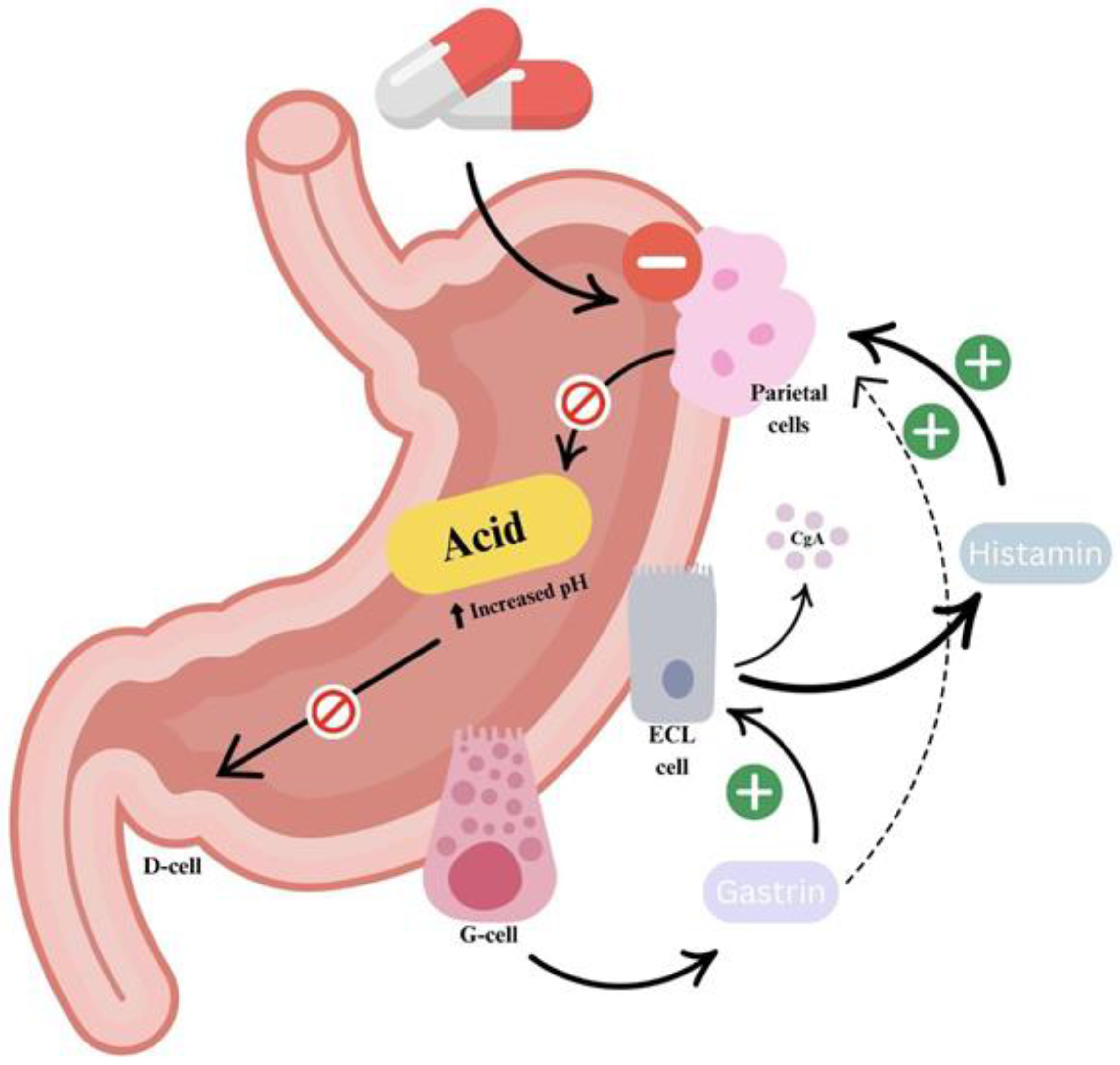Ever woken up with a burning feeling in the chest that feels like a tiny dragon doing yoga on your esophagus? You’re not alone. Many of us battle heartburn or reflux after dinner, and the frustration grows when the symptoms don’t quit just because the lights are off. The good news? Taking famotidine at night can often calm that nighttime fire. In the next few minutes I’ll walk you through how this simple timing trick works, what the research says, how to do it safely, and why it might be the missing piece in your bedtime routine.
How It Works
First, a quick science refresher (don’t worry, I’ll keep it light). Famotidine belongs to the class of H2‑blockers. It snuggles onto histamine H2 receptors in the stomach lining, stopping histamine from urging those cells to pump out acid. The result? Less acid, less irritation.
Night‑time Acid Physiology
When we lie down, gravity stops helping keep stomach contents where they belong. Saliva, which normally helps neutralise acid, slows down, and the lower esophageal sphincter relaxes a bit. All of this creates a perfect storm for acid to travel upward, especially after a big evening meal. That’s why many people experience “night‑time reflux” – the acid is still churning, but we’re horizontal.
Key Study Insight
According to a study in PubMed, a single 40 mg dose of famotidine peaks in the bloodstream 1‑3 hours after swallowing and keeps acid production suppressed for 10‑12 hours. That window lines up perfectly with the hours you spend sleeping.
Clinical Proof
It’s tempting to think “maybe it’s just a rumor,” but the science backs up nighttime dosing.
Bed‑time Dose Lowers Nocturnal Acidity
Researchers gave patients a 40 mg tablet at 10 p.m. and monitored stomach pH for 24 hours. Over half the time, the intragastric pH stayed above 4 – a level considered protective against ulcer formation and heartburn. A PubMed study reported these findings, showing that a bedtime dose steadies the acid ship through the night.
Pre‑dinner Low‑dose Prevents Sleep‑Disturbing Heartburn
Even a modest 10 mg taken an hour before your evening meal can dampen the post‑dinner surge of acid. In a controlled trial, participants reported fewer awakenings due to heartburn when they followed this schedule. The research published in PubMed highlighted this simple tweak as a game‑changer for frequent reflux sufferers.
Nocturnal Administration Speeds Ulcer Healing
Two multicenter trials in Austria and Germany examined patients with gastric ulcers. Those who took famotidine at night healed significantly faster than those on a morning‑only regimen. The study’s abstract confirms that bedtime dosing isn’t just about comfort – it can actually accelerate tissue repair.
Early‑Evening Beats Late‑Evening
When the same 40 mg dose was given immediately after dinner, the acid‑suppressing effect lasted about 10 hours. Waiting three hours (a “late‑night” dose) shrank that window to just over 7 hours. An article in Karger demonstrated that timing matters as much as the dose itself.
Timing Guide
Now that the evidence is on our side, let’s talk logistics. How do you fit famotidine neatly into your nighttime routine?
Optimal Timing
For most adults, the sweet spot is 30‑60 minutes before you hit the pillow. If you eat a late dinner (say after 7 p.m.), aim for a dose about an hour later. This lets the medication reach its peak right as you settle in for sleep.
Typical Nighttime Dose
- 20 mg
- Adequate for occasional heartburn or mild GERD.
- 40 mg
- Preferred for proven ulcers, severe reflux, or when you need that full 12‑hour shield.
Step‑by‑Step Routine
- Finish dinner (preferably before 8 p.m.).
- Wait an hour; sip a glass of water.
- Pop your famotidine tablet (or measure the suspension).
- Brush teeth, dim the lights, and aim for a consistent bedtime.
Example Schedule
- 7 p.m. – dinner
- 8 p.m. – famotidine 40 mg
- 10 p.m. – lights out
What If I Miss a Dose?
Take it as soon as you remember—provided it’s still at least 4 hours before the next scheduled dose. If it’s almost bedtime, just skip it and resume the regular schedule tomorrow. Doubling up can increase side‑effects without added benefit.
Benefits vs Risks

Every medication walks a line between help and harm. Let’s weigh the scales.
Key Benefits
- Continuous acid suppression through the night, reducing reflux episodes.
- Improved sleep quality – fewer awakenings, more restful hours.
- Faster ulcer healing – especially when combined with a night‑time dose.
- Cost‑effective – famotidine is generally cheaper than proton‑pump inhibitors.
Potential Side‑Effects
Most people tolerate famotidine well. Occasionally you might notice headache, mild dizziness, or a transient change in bowel habits. Serious reactions are rare.
When to Be Cautious
Kidney impairment can slow drug clearance, so doctors often halve the dose. Elderly patients sometimes report confusion at higher doses. The medication does not significantly interact with CYP450 enzymes, which means fewer surprises with other prescriptions, but always double‑check with your pharmacist.
Special Safety Questions
-
Is famotidine a PPI?
No – it’s an H2‑blocker, which works faster but for a shorter period than proton‑pump inhibitors. -
Is 40 mg twice a day safe?
The typical regimen is 40 mg once daily at night or 20 mg twice daily. Twice‑daily 40 mg is usually reserved for severe cases and should be prescribed after renal function is evaluated. -
Can you take famotidine while pregnant?
Data are limited; the drug is classified as “Category B” in the US, meaning animal studies haven’t shown risk but human data are scarce. Discuss with your OB‑GYN before starting. -
Famotidine 20 mg para que sirve?
In Spanish, that translates to “what is 20 mg used for?” — primarily for mild GERD, occasional heartburn, and ulcer prevention. -
Famotidine 40 mg para que sirve?
The higher dose tackles more severe reflux, confirmed duodenal ulcers, and Zollinger‑Ellison syndrome. -
What is the famotidine dosage for infants in ml?
The suspension typically contains 10 mg per 5 ml. Dosing is weight‑based (≈0.5 mg/kg). Always have a pediatrician calculate the exact amount.
Special Populations
Not everyone’s stomach is the same, so the “one‑size‑fits‑all” rule doesn’t apply.
Renal Impairment
If your kidneys aren’t filtering well, the drug can accumulate. Doctors usually cut the dose to 20 mg once daily or even every other day.
Elderly Patients
Older adults may be more sensitive to dizziness or confusion. Starting low (20 mg) and watching for side‑effects is prudent.
Pregnancy & Breastfeeding
Because the safety data are limited, the recommendation is to use famotidine only if the benefits outweigh potential risks, and always under medical supervision.
Pediatrics
For infants, the liquid form is the only practical option. Example: a 5 kg baby needing 0.5 mg/kg would receive 2.5 mg, which equals 1.25 ml of a 10 mg/5 ml suspension. FDA prescribing information provides detailed charts you can share with your pediatrician.
Comparing Options
Famotidine isn’t the only night‑time acid warrior. Here’s a quick glance at how it stacks up.
| Medication | Onset | Duration of Night‑time Control | Typical Night Dose | Pros | Cons |
|---|---|---|---|---|---|
| Famotidine | 30‑60 min | 10‑12 h (40 mg) | 20‑40 mg | Quick start, inexpensive, minimal drug interactions | May need twice‑daily dosing for severe disease |
| Ranitidine | 45 min | 8‑10 h | 150 mg | Historically common | Withdrawn from many markets (contamination concerns) |
| Omeprazole (PPI) | ≈1 h | 24 h | 20 mg | Strongest acid suppression | Delayed onset, higher cost, possible long‑term risks |
| Esomeprazole | ≈1 h | 24 h | 20 mg | Similar to omeprazole, slightly better pharmacokinetics | Same delayed onset, cost considerations |
When you read the table, notice that famotidine’s “quick start” matches the need for bedtime relief, whereas PPIs are great for round‑the‑clock control but require a pre‑meal lead‑in.
Real‑World Stories
Data are convincing, but personal experience often seals the deal.
John’s Night‑time Relief
John, a 45‑year‑old accountant, struggled with GERD that woke him up three times a week. After his doctor switched him to a 40 mg bedtime dose, his awakenings dropped to once a month. “It’s like the fire finally went out,” he told me, laughing.
Emma’s Infant Journey
Emma’s six‑month‑old son suffered frequent spit‑ups after feeds. The pediatrician prescribed famotidine suspension at 0.5 mg/kg, which translated to 1.2 ml nightly. Within two weeks, the baby slept through the night, and Emma finally got a full night’s rest.
Maria’s Cautious Approach
Maria, who is pregnant, asked her obstetrician about heartburn medication. After a careful risk‑benefit discussion, they agreed on a low‑dose 10 mg bedtime regimen, monitoring her symptoms closely. “I felt safe because my doctor explained everything,” she shared.
Putting It All Together
If you’ve read this far, you probably already feel a bit more in control of your nighttime reflux. Here’s a quick recap you can bookmark:
- Famotidine is an H2‑blocker that works fast and lasts up to 12 hours.
- Clinical trials show a bedtime dose significantly reduces nocturnal acid and speeds ulcer healing.
- Take 20 mg for mild symptoms or 40 mg for ulcers/stronger reflux, ideally 30‑60 minutes before sleep.
- Watch for side‑effects, especially if you have kidney issues, are pregnant, or are giving the medication to a child.
- Compared with PPIs, famotidine offers quicker onset and fewer long‑term concerns, making it a solid night‑time choice.
Now, imagine slipping your tablet onto the nightstand, turning off the lights, and drifting off without the lingering burn of heartburn. It’s a small change, but for many it’s a big improvement in quality of life.
Have you tried a bedtime famotidine dose? How did it change your evenings? Share your story in the comments, or if you have questions about dosing or safety, feel free to ask – I’m here to help!


















Leave a Reply
You must be logged in to post a comment.